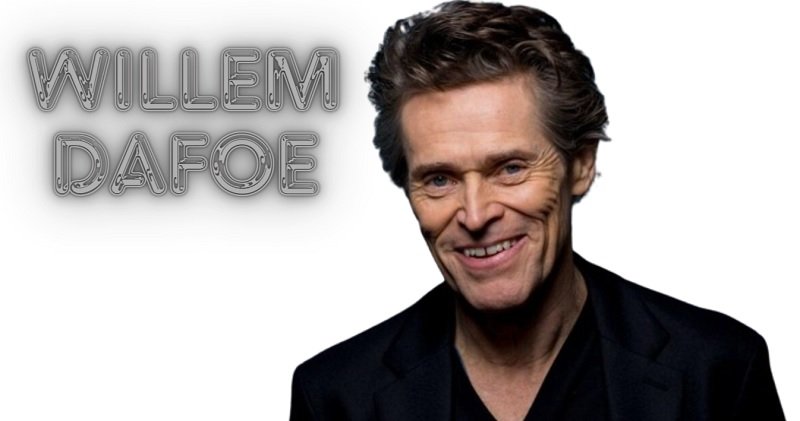Introduction
Willem Dafoe stands as one of the most versatile and iconic figures in contemporary cinema. With a career spanning over four decades, Dafoe has continually captivated audiences with his intense performances and distinctive presence. Known for his unique acting style, Dafoe has portrayed an array of characters, from heroic to deeply sinister, establishing himself as a formidable talent in Hollywood. This article delves into the multifaceted life and career of Willem Dafoe, tracing his journey from humble beginnings to international acclaim.
Early Life and Background
Born William James Dafoe on July 22, 1955, in Appleton, Wisconsin, Willem Dafoe exhibited an early interest in the performing arts. Growing up in a large family, Dafoe was one of seven children. His parents, Muriel Isabel and William Alfred Dafoe provided a stable yet creatively stimulating environment. Dafoe’s early interest in acting was evident from his participation in high school theater productions.
He briefly studied drama at the University of Wisconsin-Milwaukee before leaving to join the experimental theater company Theatre X in Milwaukee. These formative experiences laid the groundwork for his future in the arts, providing him with a profound understanding of character development and narrative complexity.
Breakthrough and Early Career
Willem Dafoe’s entry into the film industry was not without its challenges. His role in the 1980 film “Heaven’s Gate” was cut during the editing process, a setback for the aspiring actor. Undeterred, Dafoe continued to pursue his passion, and his persistence soon paid off. He garnered attention with a breakout performance in the 1985 film “To Live and Die in L.A.,” where he played the role of counterfeiter Rick Masters.
This early success was a precursor to his critical acclaim in Oliver Stone’s “Platoon” (1986). In “Platoon,” Dafoe’s portrayal of the morally conflicted Sergeant Elias earned him his first Academy Award nomination for Best Supporting Actor. These roles showcased Dafoe’s ability to embody intense and complex characters, setting the stage for his future success.
Career Highlights
Willem Dafoe’s filmography is distinguished by a series of notable roles that have defined his career. In “The Last Temptation of Christ” (1988), directed by Martin Scorsese, Dafoe’s portrayal of Jesus Christ sparked both controversy and acclaim. His performance was a nuanced exploration of the human and divine, demonstrating his ability to take on challenging and provocative roles.
Dafoe’s versatility was further demonstrated in the “Spider-Man” series (2002-2007), where he played the villainous Norman Osborn, also known as the Green Goblin. His portrayal blended menace with a nuanced psychological depth, making him one of the most memorable villains in the superhero genre. Dafoe’s ability to switch seamlessly between independent films and blockbuster hits speaks to his range as an actor.
In recent years, Dafoe’s performances in “The Florida Project” (2017) and “The Lighthouse” (2019) have garnered significant praise. In “The Florida Project,” directed by Sean Baker, Dafoe’s role as the compassionate motel manager Bobby Hicks earned him another Academy Award nomination. His portrayal of Hicks was both grounded and empathetic, showcasing his ability to bring depth to everyday characters.
In “The Lighthouse,” directed by Robert Eggers, Dafoe starred alongside Robert Pattinson in a psychological horror film that explored themes of isolation and madness. His performance as the grizzled lighthouse keeper Thomas Wake was intense and captivating, earning him critical acclaim and further solidifying his reputation as a master of his craft.
Unique Acting Style
Willem Dafoe’s approach to acting is characterized by a profound commitment to his roles. Often described as a method actor, he immerses himself fully in his characters, employing a rigorous preparation process. This dedication is evident in the breadth of characters he portrays, from sympathetic protagonists to complex antagonists. Dafoe’s ability to adapt his performance style to the demands of each role underscores his exceptional range and skill as an actor.
Dafoe’s physicality is another hallmark of his acting style. He often uses his body expressively to convey the inner life of his characters, whether through the intense physicality of his role in “Platoon” or the subtle, almost choreographed movements in “The Lighthouse.” This physical expressiveness, combined with his vocal versatility, allows Dafoe to create memorable and deeply felt performances.
Willem Dafoe Personal Life
Willem Dafoe’s personal life reflects his eclectic and artistic nature. He is married to Giada Colagrande, an Italian director and actress, with whom he shares a deep creative partnership. The couple married in 2005 and have collaborated on several film projects, blending their professional and personal lives seamlessly. Dafoe’s commitment to his craft is matched by his dedication to his family and artistic pursuits.
Beyond his film work, Dafoe maintains a passion for theater, frequently returning to the stage to explore new dramatic possibilities. He is a founding member of The Wooster Group, an experimental theater company based in New York City, where he continues to push the boundaries of theatrical performance. His off-screen interests also include art and travel, contributing to his multifaceted persona.
Recent and Upcoming Projects
Willem Dafoe continues to be a prominent figure in contemporary cinema, with recent performances that have further solidified his reputation. Films such as “The French Dispatch” (2021), directed by Wes Anderson, and “Nightmare Alley” (2021), directed by Guillermo del Toro, have highlighted his continued relevance and adaptability. These films showcase Dafoe’s ability to blend into ensemble casts and deliver standout performances.
Looking ahead, Dafoe’s upcoming projects promise to further explore the depths of his talent. He is set to appear in several high-profile films, including “Aquaman and the Lost Kingdom” and “Poor Things,” directed by Yorgos Lanthimos. These roles are anticipated to offer new challenges and opportunities for Dafoe to demonstrate his versatility and skill.
Legacy and Impact
Willem Dafoe’s contribution to cinema is marked by his ability to transform into a wide array of characters, leaving a lasting impact on audiences and critics alike. His influence extends beyond his performances, inspiring a generation of actors with his dedication and craft. Dafoe’s willingness to take on unconventional roles and his collaboration with a diverse range of directors have set him apart as a true artist in the industry.
Recognized by his peers and industry professionals, Willem Dafoe’s legacy is one of artistic integrity and relentless pursuit of excellence. His four Academy Award nominations, numerous accolades, and the respect he commands within the film community are testaments to his enduring impact.
Conclusion
Willem Dafoe’s career is a testament to the power of versatility and dedication in the arts. From his early days in experimental theater to his celebrated film roles, Dafoe has continually pushed the boundaries of his craft. His ability to inhabit a wide range of characters with depth and authenticity has made him one of the most respected and admired actors of his generation. As audiences and critics eagerly anticipate his future projects, Willem Dafoe remains a compelling and influential figure in the world of cinema.

